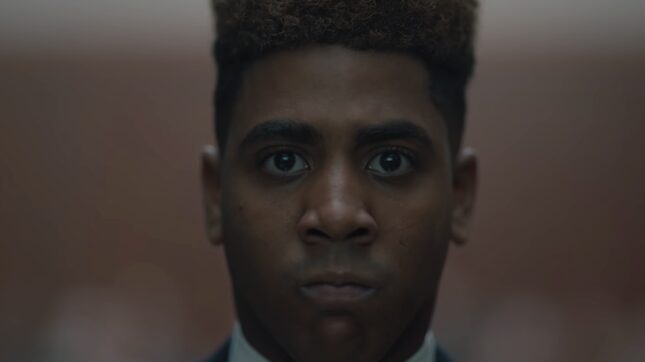
Screenshot: Netflix
One of the earliest scenes in Ava DuVernay’s 2014 film Selma depicts the infamous Birmingham Church Bombing. In September of 1963, four adolescent girls were killed and 22 others were injured after the Ku Klux Klan made the church a target of its hatred. When I saw the film, the scene made me weep. I was grateful I’d chosen to watch it alone, at home, so that I could pause and collect myself before continuing on, forcing myself to bear witness to a story that so clearly demonstrated the need for continued activism and acted as an additional catalyst for the Civil Rights Movement as we know it. What I didn’t know at the time, was that by 1963, homemade bombs were being set off in black homes and churches with such frequency that the city earned the nickname “Bombingham.” In a parallel universe, those four girls are merely a statistic, their names lost in the deluge of dead black people who suffered at the hands of a racist system. When They See Us, Netflix’s new docudrama about the “Central Park 5” also helmed by Duvernay, induced a similar conflict for me: their story is horrifying, tragic and utterly typical in almost every way.
Most people are familiar with the broad strokes of what happened to Kevin Richardson, Raymond Santana, Antron McCray, Yusef Salaam, and Korey Wise. After being rounded up and coerced into confessing to a brutal rape, the boys were charged, convicted, and served sentences ranging from 5 to 15 years before being exonerated in 2002. But the four episodes paint a picture that reveals how useless it can be to rail against a “system.” Abusive institutions like the justice system the boys were subjected to are made up of individual people making individual choices to do collective harm under a tenuous banner of “greater good.” These “systems” protect themselves, acting in concert to uphold the status quo and bend outliers toward the party line. When They See Us tells the story of boys who became men under harsh and unearned conditions and how their plight rippled out to affect their families, loved ones, and their communities.
When They See Us tells the story of boys who became men under harsh and unearned conditions and how their plight rippled out to affect their families, loved ones and their communities.
The first episodes show how the police and prosecutors presumed the boys’ guilt and worked backwards to the available evidence in order to make their story fit. The viewer watches police officers berate and bully the boys into admitting to a violent crime, tag-teaming with each other to both threaten and promise lenience. The viewer sees how prosecutor Linda Fairstein (portrayed with gusto by Felicity Huffman, herself under scrutiny for taking advantage of an oppressive system) decides early on that the proximity of other more minor crimes to Trisha Meili’s rape must mean that the perpetrators are one and the same. The viewer watches as she moves from believing there is one rapist to inventing four others, guided only by her bigotry, envisioning herself as a righteous crusader for the victim. We then see how she works with police to massage the night’s timeline to fit her theory of the crime and how she dismisses bad facts to make framing innocent children easier. Even as other members of law enforcement raise scant objections, she cajoles them to get in line, invoking Meili’s assault as a guiding light to justify all other abuses. It’s not a coincidence that Fairstein has taken most of the public beating since the show has aired. If the case were a fast-moving vehicle, Fairstein was the driver, recklessly at the wheel, stubbornly steering it headfirst into a tree.
When They See Us is terrifying to watch. There’s an inevitability that seeps into every frame, not because we know the ending, but because the suffering feels so unavoidable. Of course a stable of white officers rounded up every black teen they could find regardless of their right to do so. Of course they substituted one for another when their case started to fall apart. Of course they interrogated the boys for hours without their parents. Of course they went along as the prosecutor led the evidence instead of letting it lead her. Of course the boys were naive enough to take the officers at their word. Of course a jury convicted despite a lack of forensic evidence and a litany of conflicting testimony. Of course, of course, of course…
The disproportionate arrests of black and brown people in the U.S. has been a problem for most of America’s history, and what made these boys unique was the media circus that the case generated. Without it, they would have simply been veteran members in a dismal club of lives dismantled by racist policing. Invoking the names of Jordan Davis, Tamir Rice, and Aiyana Jones not only renews calls to grant them justice, but taps into the long history of the ways in which injustice manifests in a system built on white supremacy; police brutality as a reproductive justice issue. It hearkens back to the legacy of enslaved women killing their children rather than see them in bondage and yearns for an afro-future in which black people can be truly free. The terrible truth is that these children never had a chance.
When They See Us is streaming on Netflix.
Cate Young (@battymamzelle): smugsexual, thundercunt hagbeast.